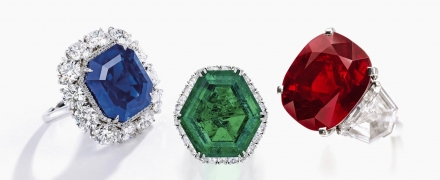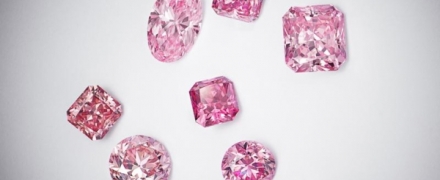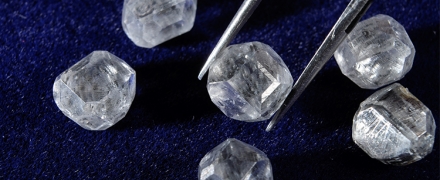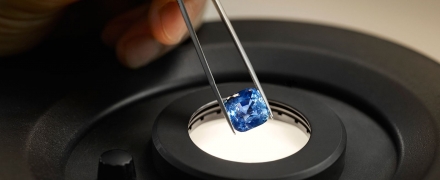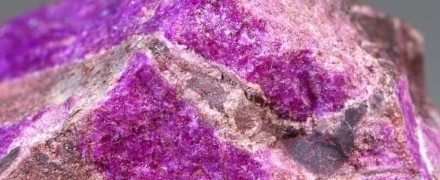open 10 am - 7 pm
laboratory is closed
Chameleon in setting
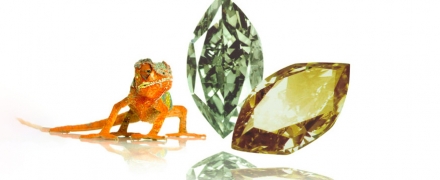
Everyone knows the phenomenon of color change in stones, the so-called "alexandrite effect", named after a variety of chrysoberyl - alexandrite. However, this property can be found not only in alexandrite. Among diamonds, very rarely, but also stones with a color change effect come across. There is even an unusual variant of its manifestation - a color change under the influence of temperature, as well as with a prolonged stay of such stones outside the influence of electromagnetic radiation (light) in the ultraviolet-visible range. When heated, “chameleon” diamonds usually change color from olive yellow to yellow or yellow-brown, but sometimes a reverse effect is noted with a change in color from yellow to olive green. Unfortunately, when wearing jewelry under normal conditions, this effect is very difficult to observe, but at the temperatures of the steam room in the sauna, there is a chance to see a change in the color of the stone.
В геммологической практике бывают весьма увлекательные случаи с диагностикой ювелирных вставок
Но помимо редкости цвета и высокой стоимости таких камней, многие розовые камни выделяются одной замечательной особенностью – они проявляют плеохроизм, то есть в зависимости от положения осмотра камня он может иметь дополнительные оттенки – оранжевый или пурпурный.
Currently, gemstones are produced by two fundamentally different technological methods - the High Pressure - High Temperature method (“HPHT”, High-pressure & High-temperature) and the Chemical Vapor Deposition (“CVD”, Chemical vapor deposition) method. The "HPHT" method is the most tested classical synthesis method, which can be used both carbon deposition on diamond from flux melts and catalytic reactions. In "CVD" synthesis, diamond growth occurs on a seed during carbon deposition mainly from a gaseous medium at relatively low temperatures and pressures.
Jewelry and precious stones are just such a category of goods, when buying which you need to pay attention to many criteria.
Sogdianite is a rather rare mineral and more often it can be found as a collection material (moreover, in systematic collections), and it is extremely rare in jewelry.


